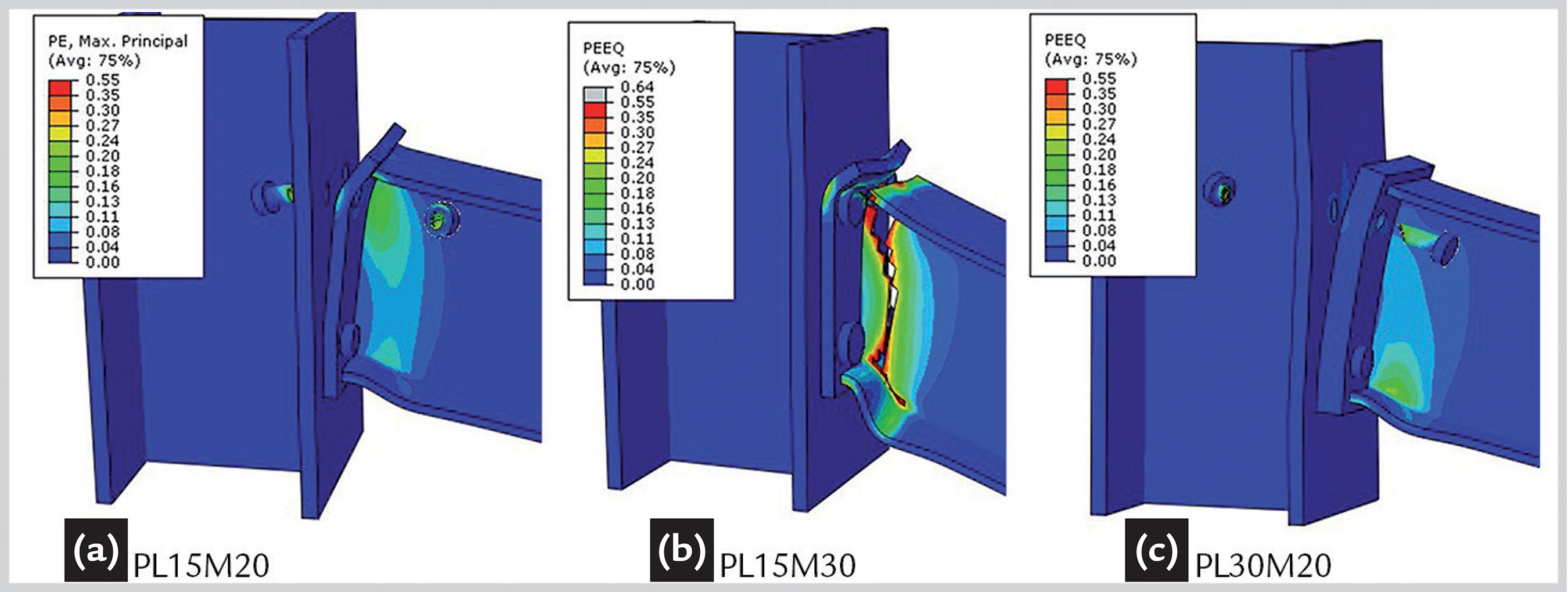Abstract
With the advances in computational analysis techniques and development of new design methods, new interests have arisen in structural engineering. In the last few years, with the increasing numbers of terrorist attacks, the study of robustness, progressive structural collapse and ultimate resistance of structures has grown exponentially, with various studies being published all over the world. In order to perform this study through computational analysis, it was necessary to develop a calibrated numerical model capable of representing the behaviour of structures in their final stage of resistance. This article presents an evaluation of semi-rigid connections through a numerical model considering the implementation of collapse and damage progression criteria calibrated against experimental tests. Afterwards, a parametric study was developed by varying the bolt diameters and endplate thickness of a flush endplate semi-rigid connection. The main parameters and criteria that rules the simulation of flush end-plate joints subject to damage were assessed, allowing that many different kind of studies with similar components could be performed, such as impact, explosion and column loss analysis. As an outcome, the bending moment-rotation curves of these connections are presented and it is shown that those with a larger bolt diameter were able to produce greater rotation, while an increase in the endplate thickness was able to provide a greater bending moment capacity.
Keywords:
semi-rigid connection; nonlinear analysis; progressive damage









